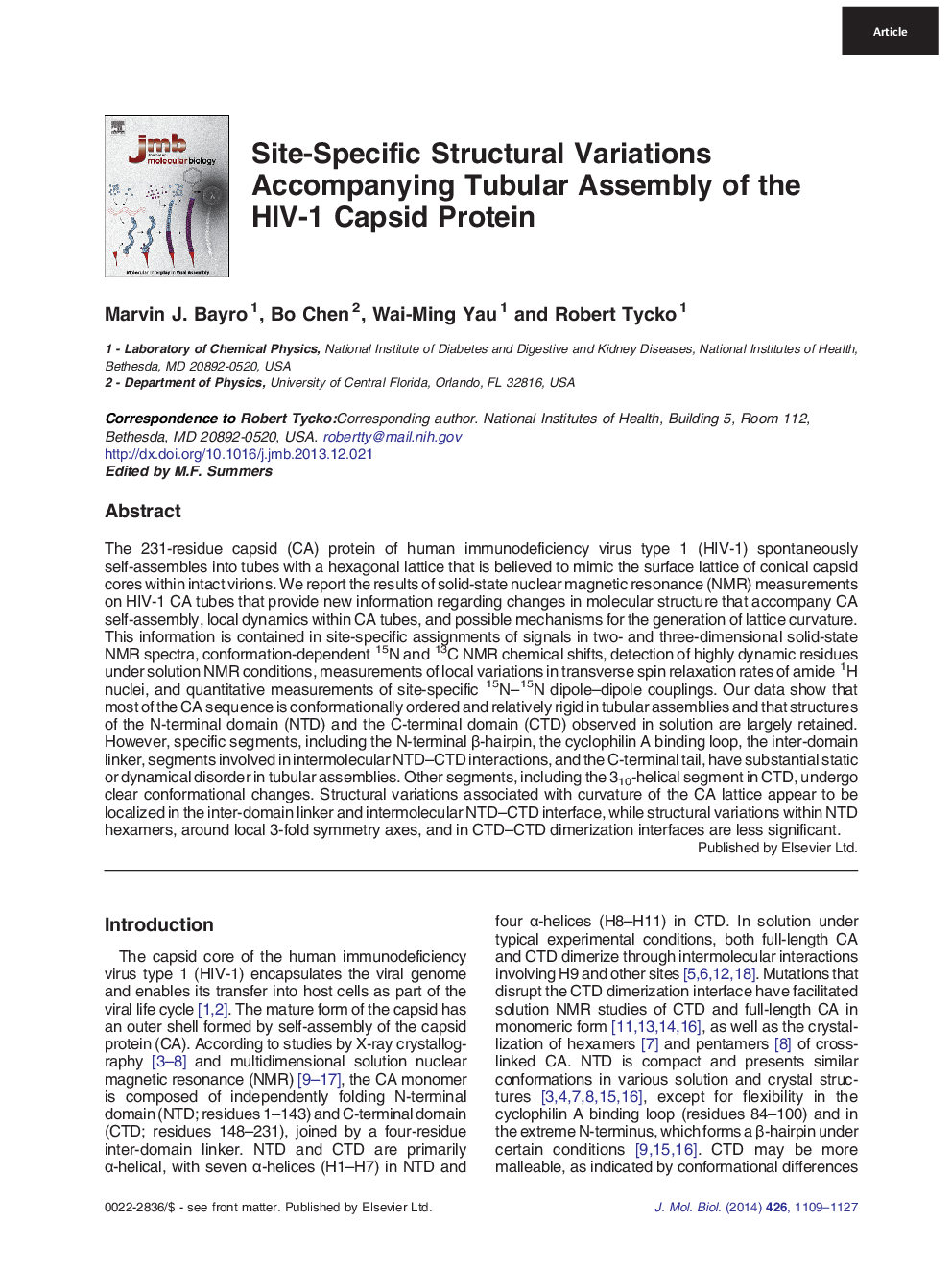| کد مقاله | کد نشریه | سال انتشار | مقاله انگلیسی | نسخه تمام متن |
|---|---|---|---|---|
| 2184552 | 1095881 | 2014 | 19 صفحه PDF | دانلود رایگان |

• Structure and dynamics of self-assembled HIV-1 CA are not yet fully understood.
• Solid-state NMR spectroscopy distinguishes ordered and disordered residues in CA tubes.
• Solid-state NMR data identify conformational changes accompanying CA self-assembly.
• Structural variations localized to NTD–CTD linker and intermolecular NTD–CTD contacts.
The 231-residue capsid (CA) protein of human immunodeficiency virus type 1 (HIV-1) spontaneously self-assembles into tubes with a hexagonal lattice that is believed to mimic the surface lattice of conical capsid cores within intact virions. We report the results of solid-state nuclear magnetic resonance (NMR) measurements on HIV-1 CA tubes that provide new information regarding changes in molecular structure that accompany CA self-assembly, local dynamics within CA tubes, and possible mechanisms for the generation of lattice curvature. This information is contained in site-specific assignments of signals in two- and three-dimensional solid-state NMR spectra, conformation-dependent 15N and 13C NMR chemical shifts, detection of highly dynamic residues under solution NMR conditions, measurements of local variations in transverse spin relaxation rates of amide 1H nuclei, and quantitative measurements of site-specific 15N–15N dipole–dipole couplings. Our data show that most of the CA sequence is conformationally ordered and relatively rigid in tubular assemblies and that structures of the N-terminal domain (NTD) and the C-terminal domain (CTD) observed in solution are largely retained. However, specific segments, including the N-terminal β-hairpin, the cyclophilin A binding loop, the inter-domain linker, segments involved in intermolecular NTD–CTD interactions, and the C-terminal tail, have substantial static or dynamical disorder in tubular assemblies. Other segments, including the 310-helical segment in CTD, undergo clear conformational changes. Structural variations associated with curvature of the CA lattice appear to be localized in the inter-domain linker and intermolecular NTD–CTD interface, while structural variations within NTD hexamers, around local 3-fold symmetry axes, and in CTD–CTD dimerization interfaces are less significant.
Graphical AbstractFigure optionsDownload high-quality image (536 K)Download as PowerPoint slide
Journal: Journal of Molecular Biology - Volume 426, Issue 5, 6 March 2014, Pages 1109–1127